Bio 119 Exam 1
1/66
There's no tags or description
Looks like no tags are added yet.
Name | Mastery | Learn | Test | Matching | Spaced |
|---|
No study sessions yet.
67 Terms
Linnean Hierarchy
Kingdom, Phylum, Class, Order, Family, Genus, Species
What is the term for the process of evolution at the level of species or higher taxonomic unit?
macroevolution
Terms describe a character as opposed to a character state
flower color, leaf shape
Which of the following terms describe a character state as opposed to a character
blue flower, lobed leaf
What is the term for the process of evolution at the level of the population, which involves changes in allele frequencies?
microevolution
taxa that no longer exist
extinct
a group that includes all the descendants of the group's most recent common ancestor
Monophyletic
taxa that exist today
extant
a group that includes some but not all the descendants of the group's most recent common ancestor |
paraphyletic
a term that is used to refer specifically to a monophyletic group
clade
a branching point in a phylogeny that indicates an ancestor of its descendant taxa
node
the lines in a phylogeny that indicate paths of descent |
branch
All Spermatophytes produce flowers and fruit.
false
All Embryophytes are Tracheophytes but not all Tracheophytes are Embryophytes.
false
All Embryophytes are Viridophytes but not all Viridophytes are Embryophytes.
true
Chlorophyll b is required for oxygenic photosynthesis and is diagnostic for Embryophytes.
false
All Spermatophytes are Tracheophytes but not all Tracheophytes are Spermatophytes.
true
All Tracheophytes are Spermatophytes but not all Spermatophytes are Tracheophytes.
false
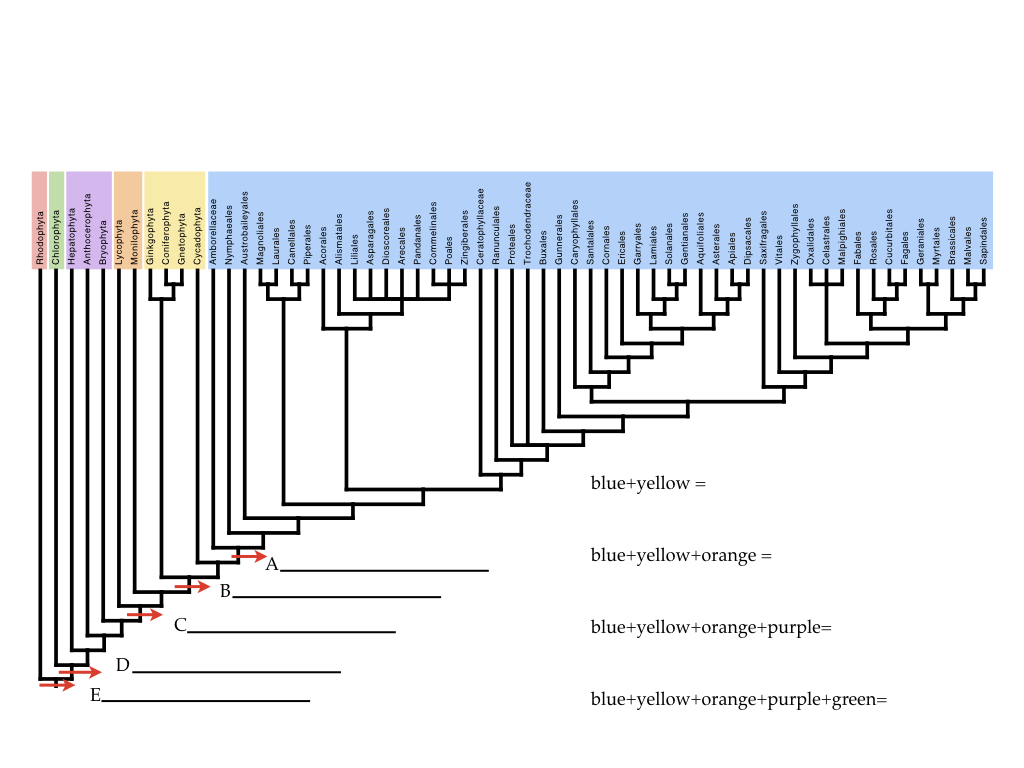
What feature appears in the diagram at the node labeled A (or 6)?
flowers and fruit
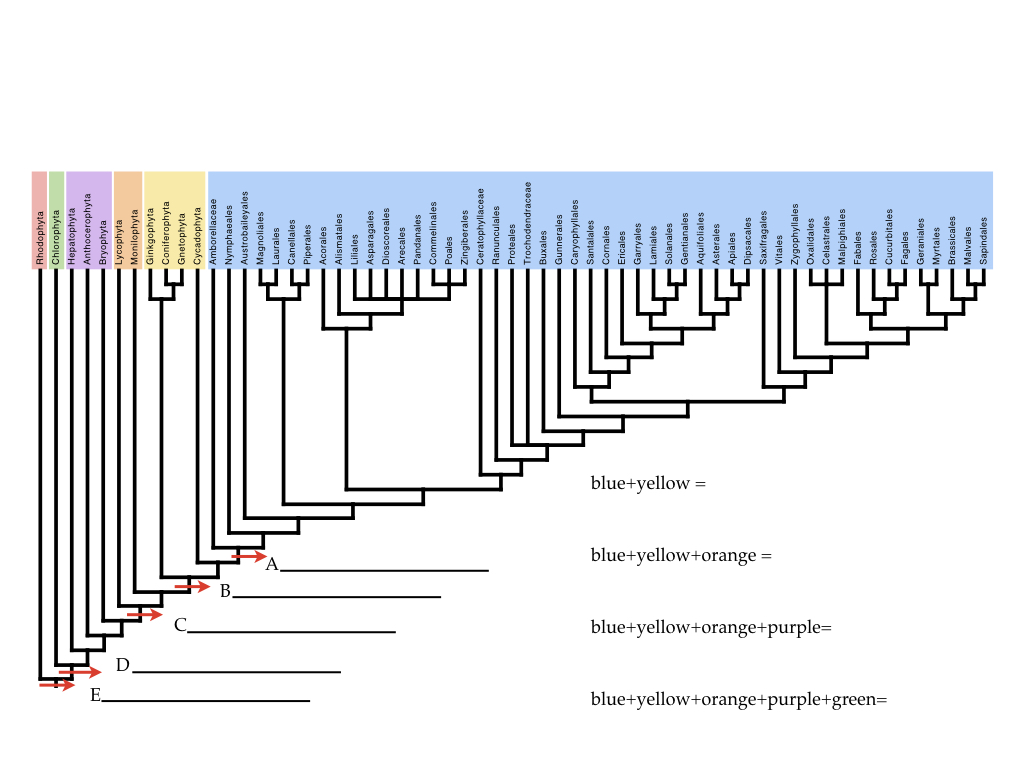
What is the name for the taxa comprised of the blue, yellow, and orange groups?
Tracheophytes
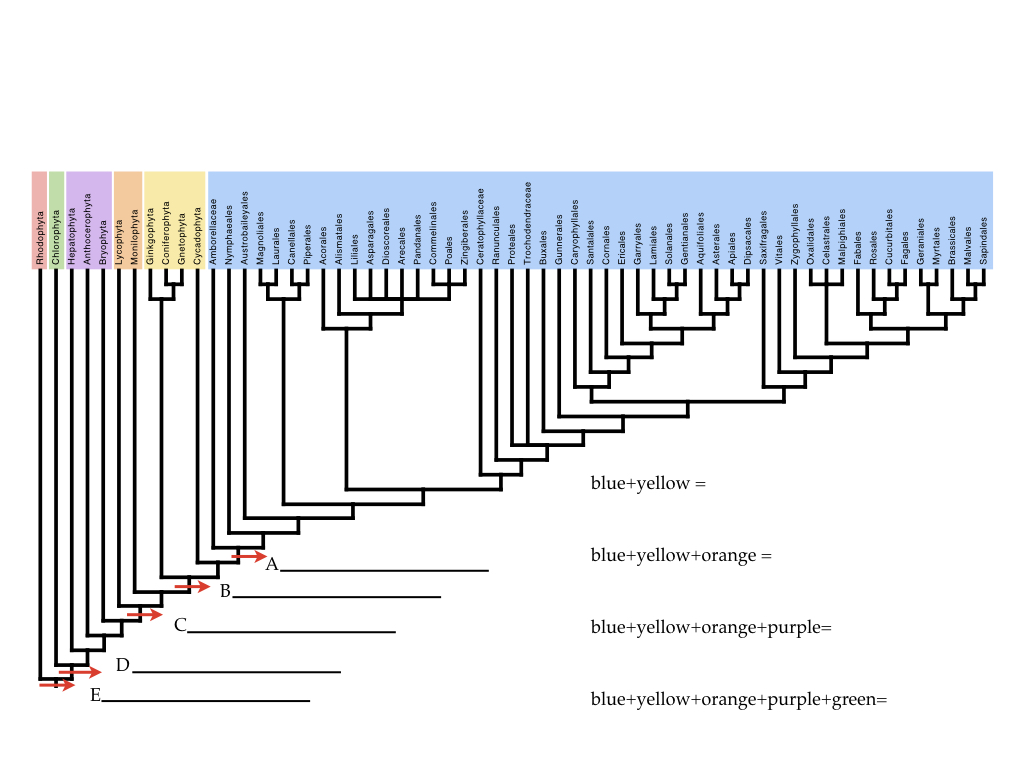
What is the name for the taxa comprised of the blue and yellow groups?
Spermatophytes
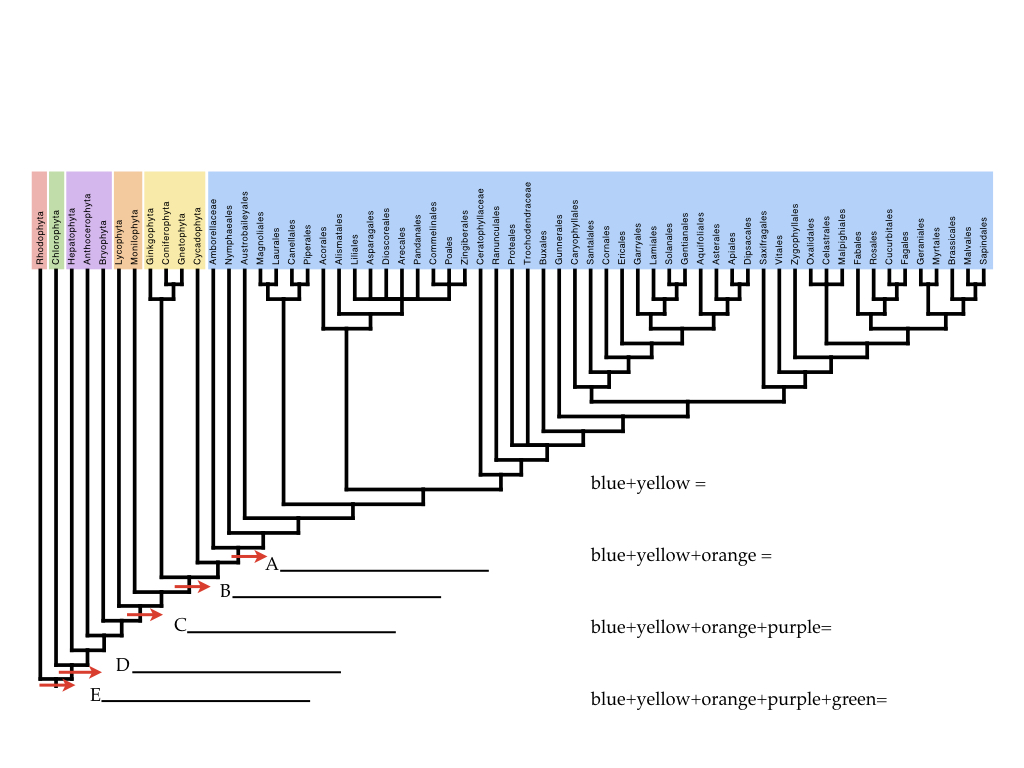
What is the name for the taxa comprised of the blue, yellow, orange, and purple groups?
Embryophytes
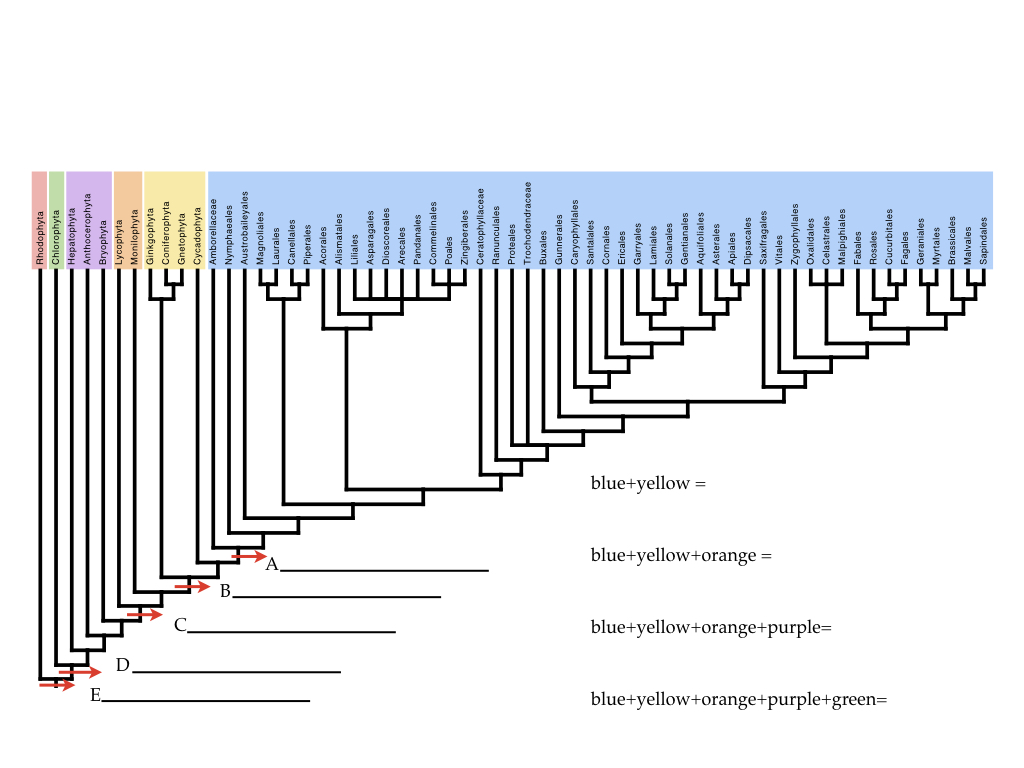
What feature appears in the diagram at the node labeled B (or 5)?
seeds and pollen

What feature appears in the diagram at the node labeled D (or 2)?
includes chlorophyll B
the group that includes plants that produce seeds and pollen
Spermatophytes
the group of plants that produces flowers and fruit
Angiosperms
the primary photosynthetic pigment found in Rhodophytes and Viridophytes |
chlorophyll a
the group that includes only vascular plants |
Tracheophytes
the group that includes Chlorophytes and Embryophytes
Viridophytes |
the group that includes both non-vascular and vascular plants
Embryophytes
seed plants that do not produce flowers or fruit
Gymnosperms
an accessory photosynthetic pigment that is diagnostic for Viridophytes
chlorophyll b
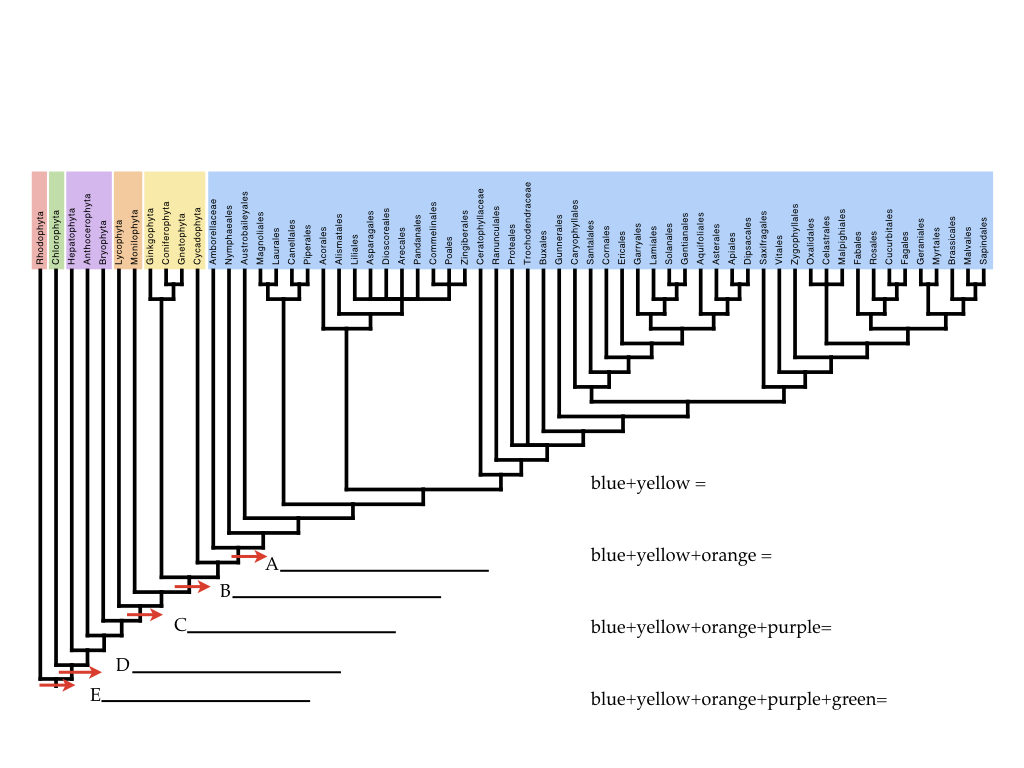
What feature appears in the diagram at the node labeled E (or 1)?
chlorophyll a
a type of cell division in which the ploidy of the daughter cells is one half that of the parent cell |
meiosis
the diploid, multicellular portion of the sporic meiosis life cycle
sporophyte
the haploid, unicellular portion of the sporic meiosis life cycle which is produced by mitosis
gamete |
a type of cell division in which the ploidy of the daughter cells is the same as that of the parent cell
mitosis
the haploid, unicellular portion of the sporic meiosis life cycle which is produced by meiosis
spore
the haploid multicellular portion of the sporic meiosis life cycle
gametophyte
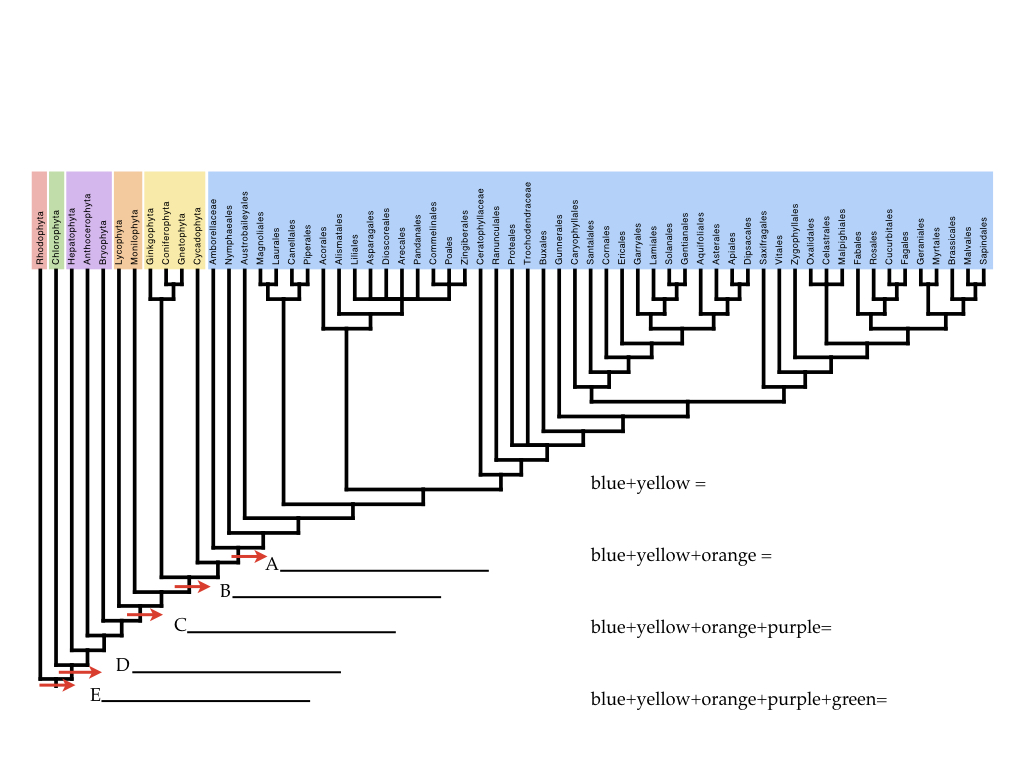
What feature appears in the diagram at the node labeled C(or 4)?
vascular tissue
What is the name for the taxa comprised of the blue, yellow, orange, purple, and green groups?
Viridophytes
Leaf Blade
Lamina
Edge of Leaf
Margin
Central Vein
Midrib
Small branch that attaches leaf to stem
petiole
Which side of the leaf is the adaxial side?
upper side
On which side of a leaf does gas exchange occur?
the abaxial side
Which of the following plant organs do the structures represent modifications of? (bulb, runner,corm)
stem
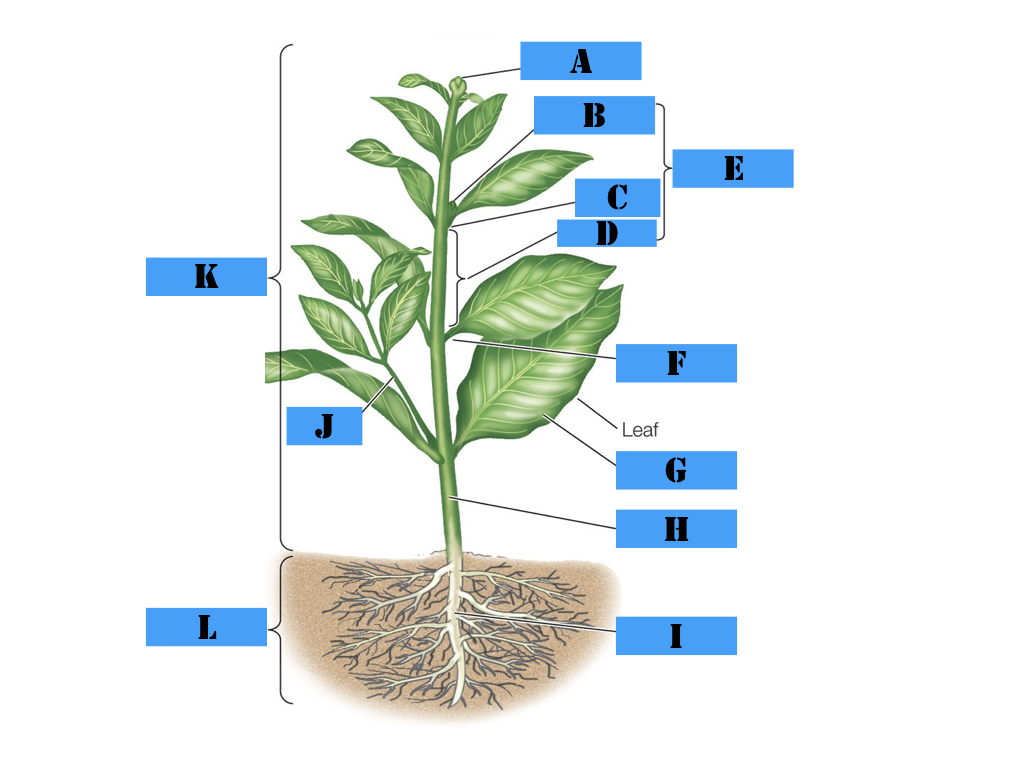
What is the term for the structure labeled A in the diagram above?
terminal bud
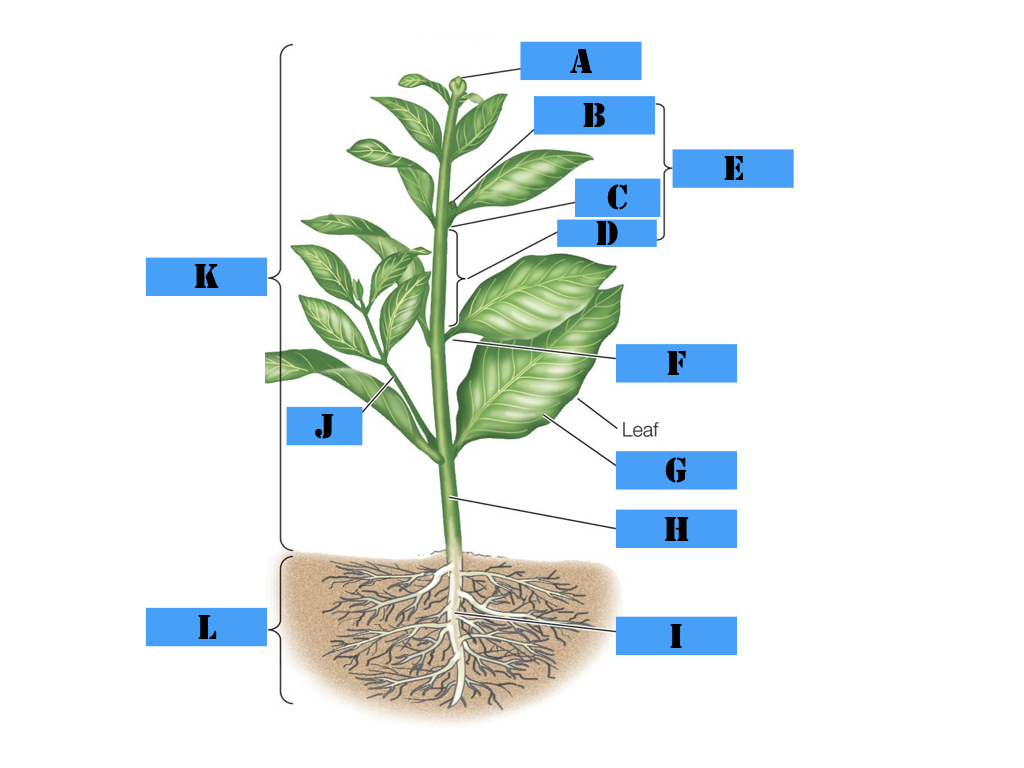
What is the term for the structure labeled B in the diagram above?
axillary bud
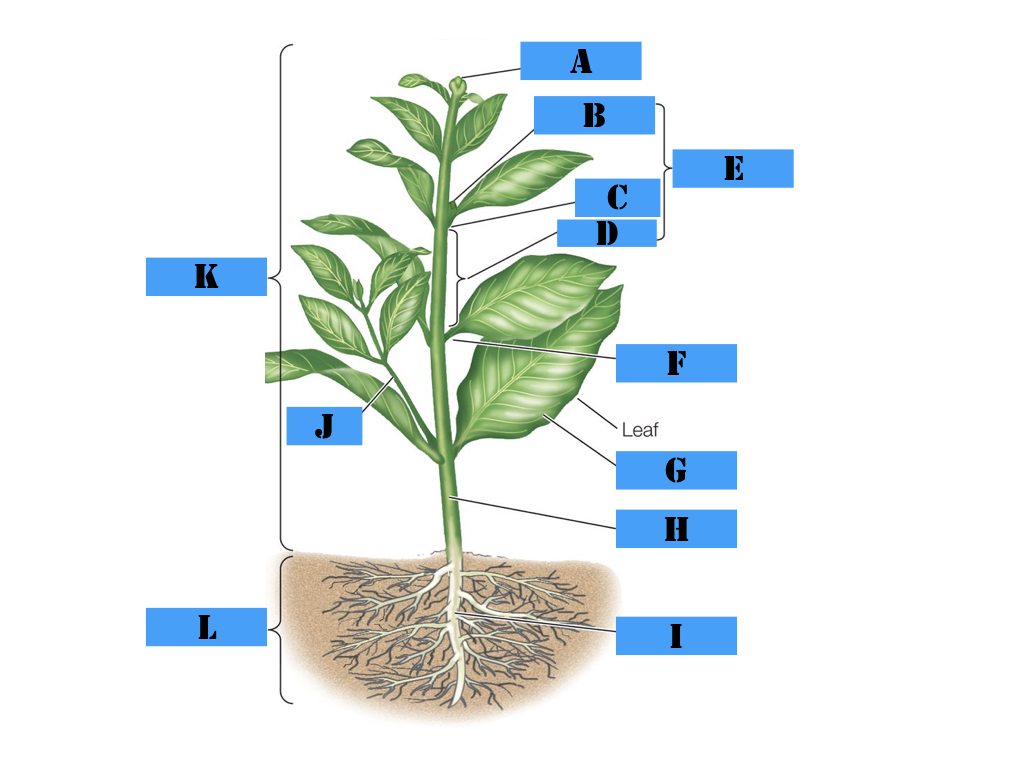
What is the term for the structure labeled C in the diagram above?
node

What is the term for the structure labeled D in the diagram above?
internode
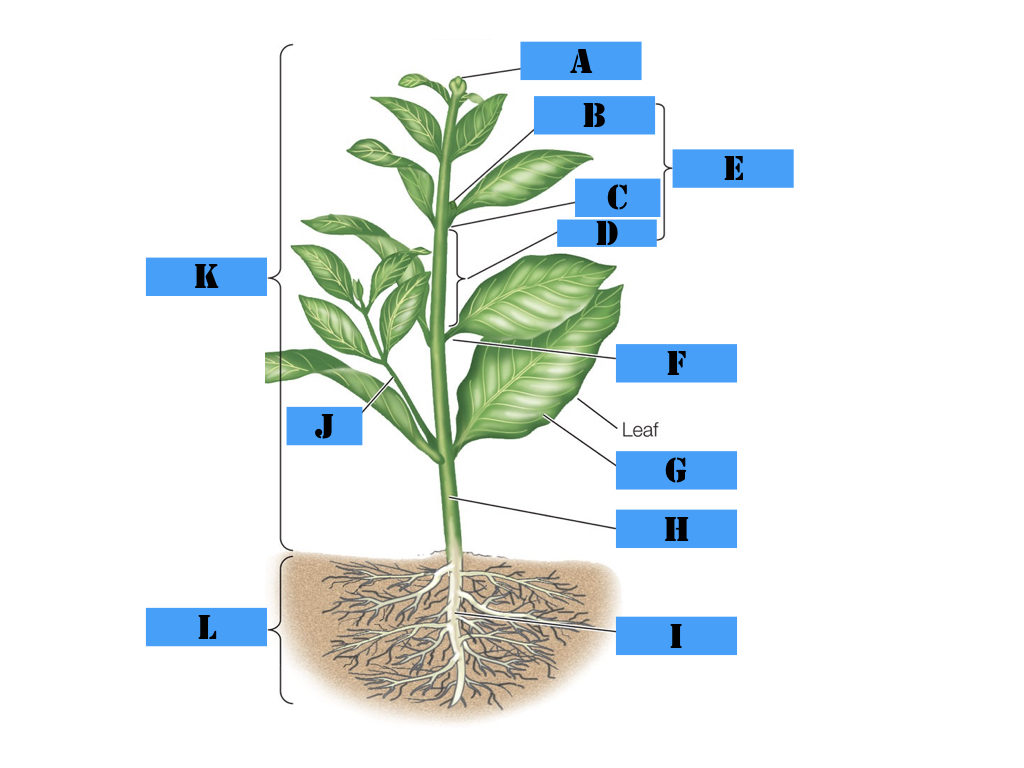
What is the term for the structure labeled E in the diagram above?
phytomer
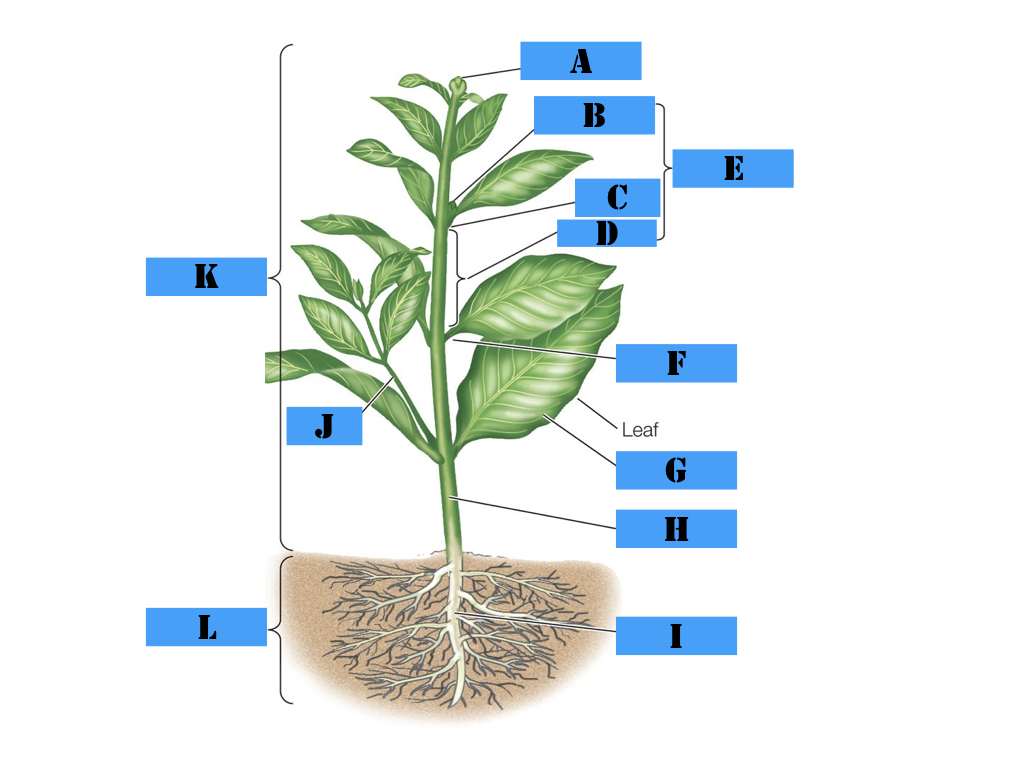
What is the term for the structure labeled F in the diagram above?
petiole
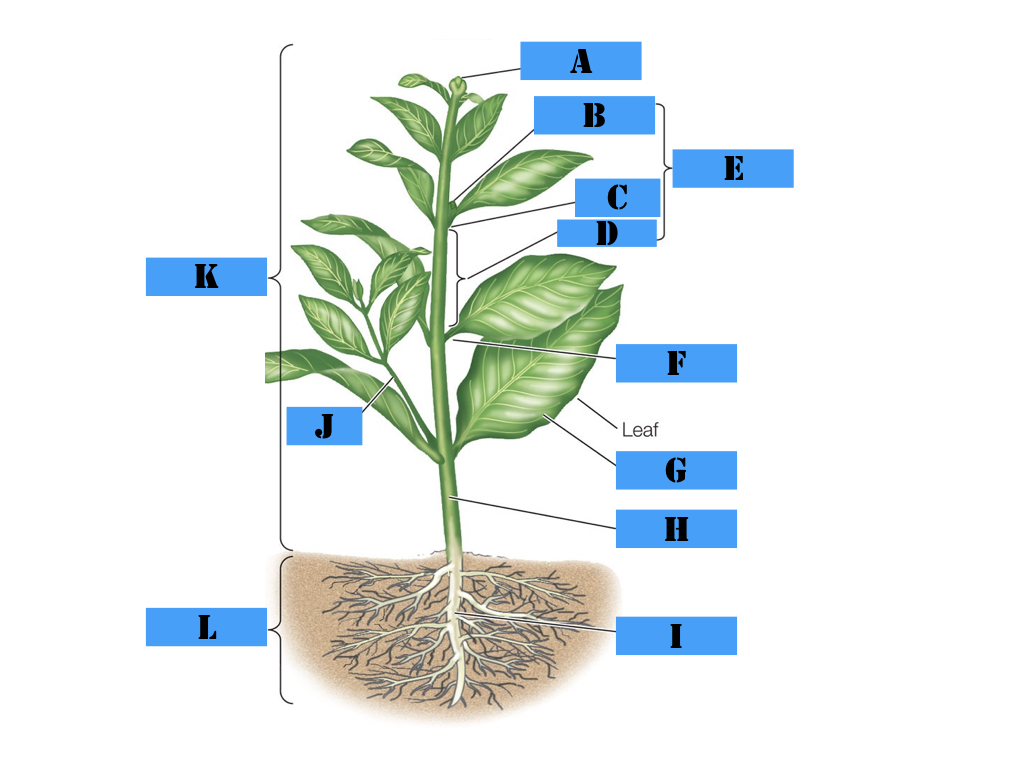
What is the term for the structure labeled G in the diagram above?
blade
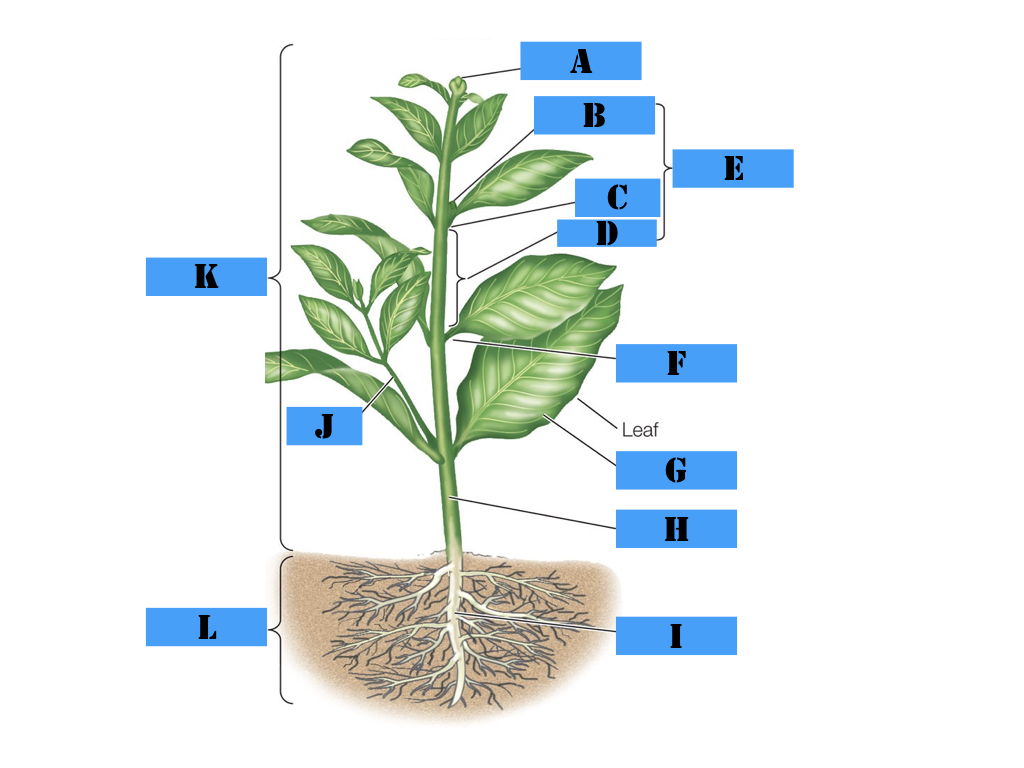
What is the term for the structure labeled K in the diagram above?
shoot system
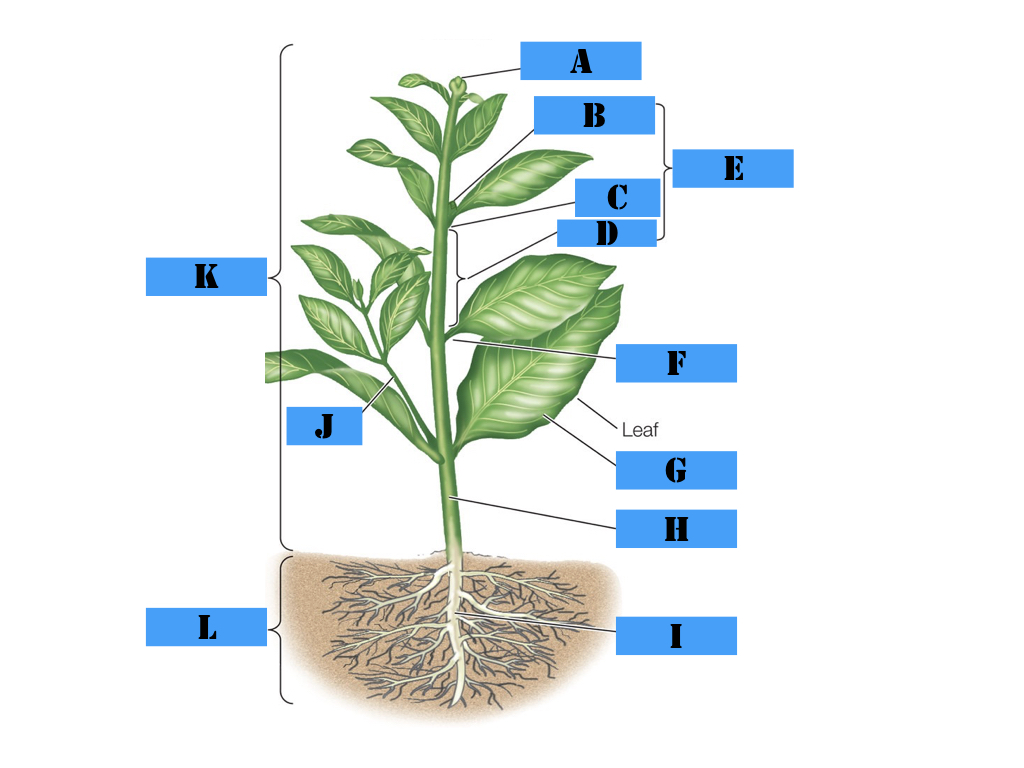
What is the term for the structure labeled L in the diagram above?
root system
Which side of the leaf is the abaxial side?
the underside
Which side of the leaf is the adaxial side?
the upper side
classification tree (going down)
viridophytes, chlorophytes and embryophytes, bryophytes and tracheophytes, lycophytes and euphyllophytes, monilophytes and spermophytes, gymnosperms and angiosperms
Viridophytes
everything except red algae, pick up chlorophyll B trait
Embryophytes
“land” plants, embryo is retained
Bryophytes
aka moss, non-vascular plants (no xylem and phloem)
Tracheophytes
vascular plants (have xylem and phloem)
Spermatophytes
seed plants (seeds and pollen)
Gymnosperms
naked seed (conifers)
Angiosperms
“vessel” seed (fruit and flowers)